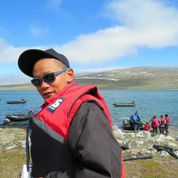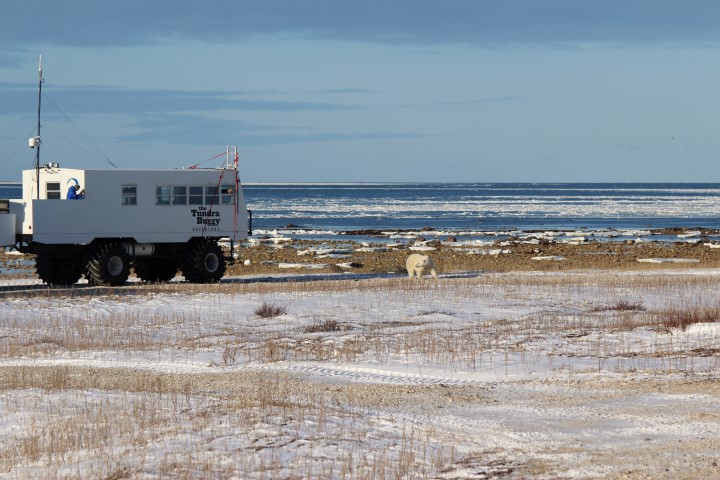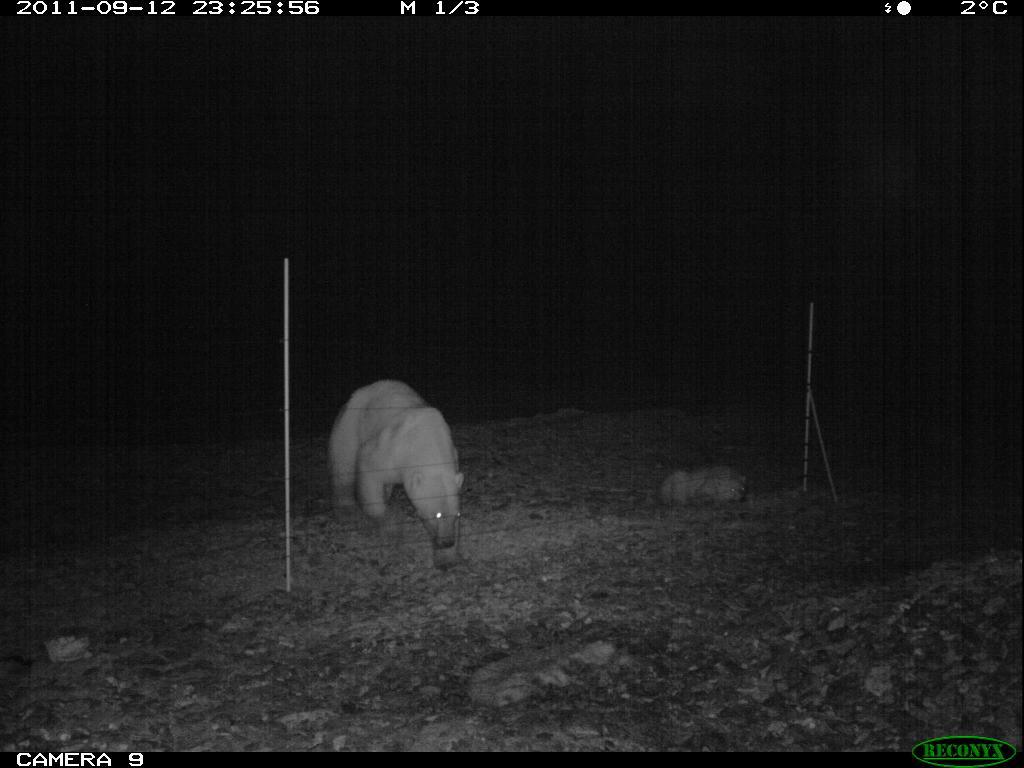
Polar bear patrol member in Russia. © M.Deminov / WWF Russia
While the world celebrated New Year’s Eve, a polar bear patrol was busy keeping polar bears and people safe in the village of Ryrkaypiy, in northeastern Russia.
Ryrkaypiy is the site of a large walrus haulout, or group resting on land. Each year, some walrus carcasses are left behind, and these attract polar bears to town. When possible, community members transport the carcasses away from town, to reduce conflicts between polar bears and people. This year, a couple carcasses near a boiler building on the edge of town brought bears too close for comfort.
Patrol members use snowmobiles, flares, and even long sticks to frighten bears away.
Patrol members Valera Kalyarahtyn and Maxim Deminov shared their notes:
December 28 – a strong blizzard
6:30 – A call from the boiler building, next to which a few walrus carcasses are attracting bears. Valera drove off one bear with the snowmobile. I came across a couple of young bears. Scared away by the snowmobile, they fled towards Cape Kozhevnikova.
12:00 – Two bears were interested in the walrus remains, and we drove them away. Quiet evening.
December 29 – blizzards
12:00: We drove two bears towards the pier on Cape Kozhevnikova. Quiet night and day.
December 30 – Another blizzard.
Quiet morning.
12:30: Another three bears found the walruses near the boiler building. We drove them away on the snowmobiles without flares.
Calm evening.
December 31
6:30: Call from the boiler building. Valera drove a bear away with flares.
8:30: Valera drove three bears away from the boiler.
12:30: All calm.
22:00: The bears waited until dark to come to the boiler. After that, they headed for the village Christmas tree. We drove them away.
January 1
4:00: Two young bears came to the outskirts of the village. Valera scared them away.
6:00: One older bear expelled from the village.
Quiet morning. We patrolled Kozhevnikova and Veber, but didn’t meet any bears.
January 2
7:00 – Three bears on the shore near the boiler room were scared away by the snowmobile, no flares required. Quiet afternoon.
19:00 – An older bear visited building 1 (last house on the shore), and was expelled.
WWF helped found Ryrkaypiy’s patrol in 2006. Today, the model has been successfully replicated in Greenland, Canada, and the United States.
Learn more about WWF’s work to reduce polar bear / human conflict.
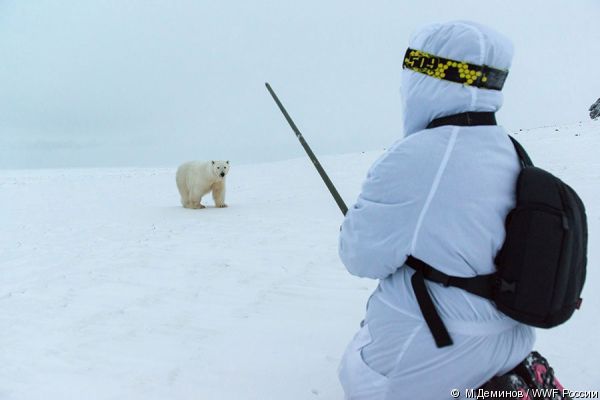
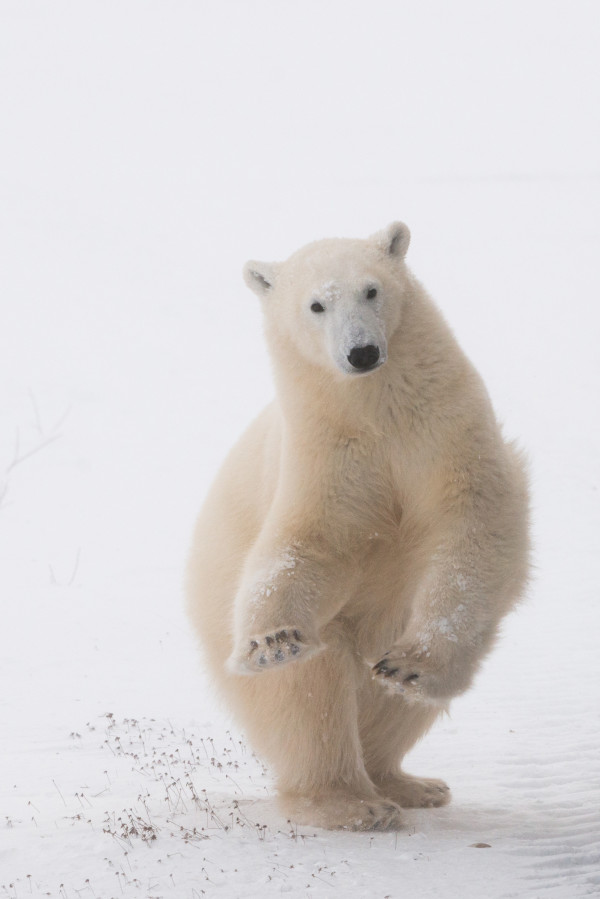

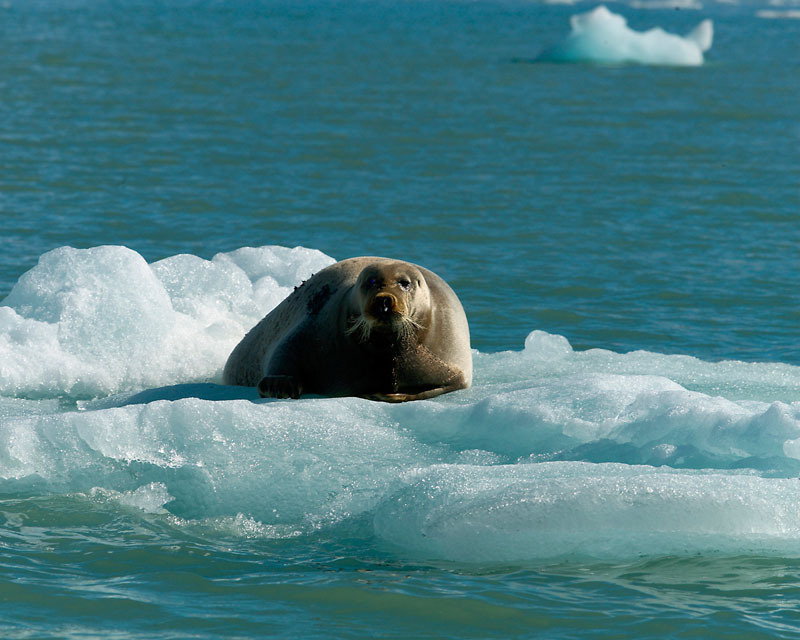

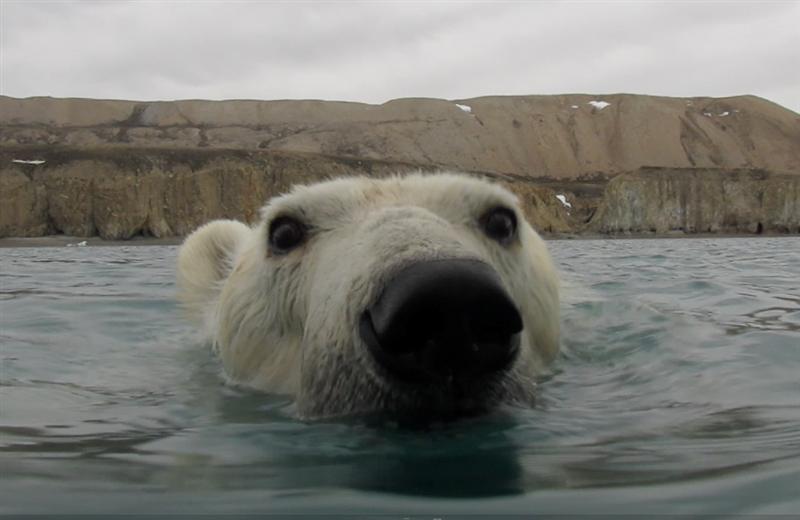

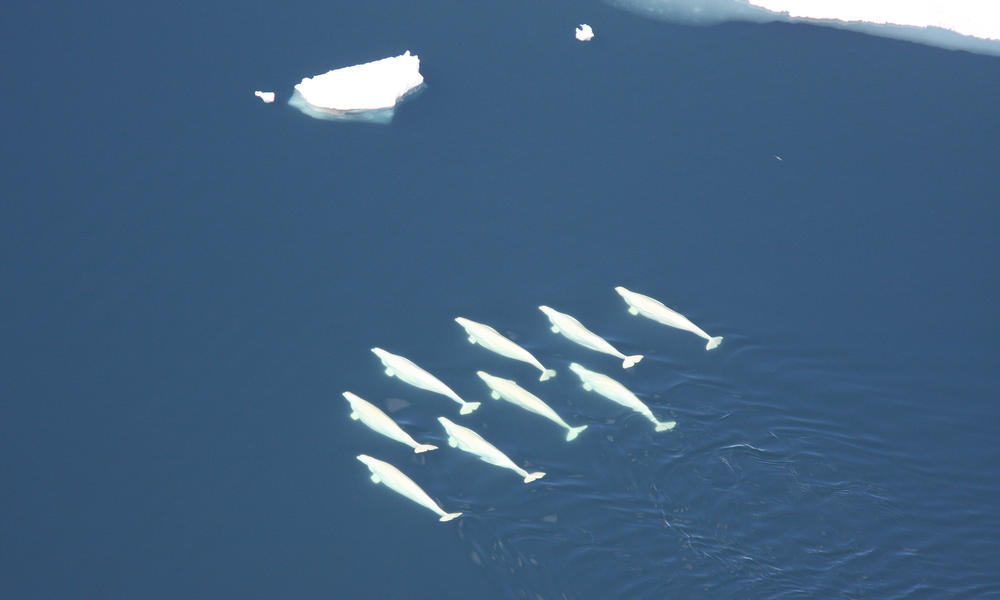
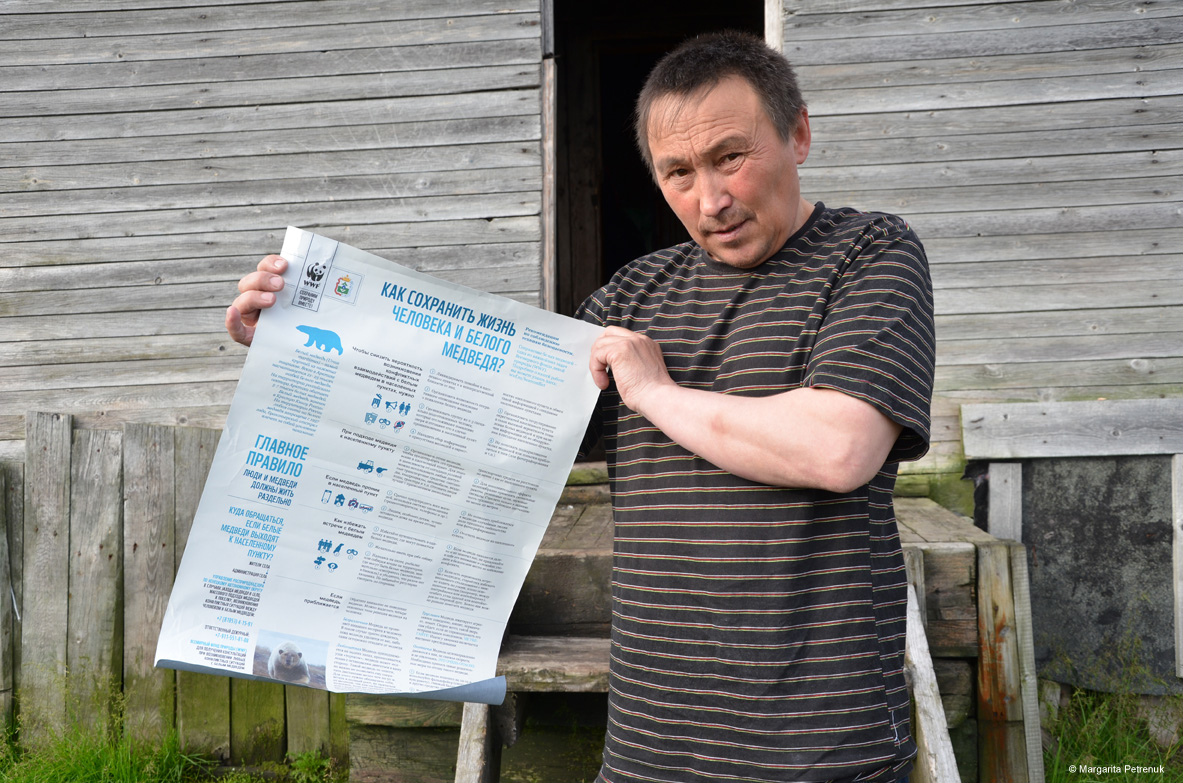

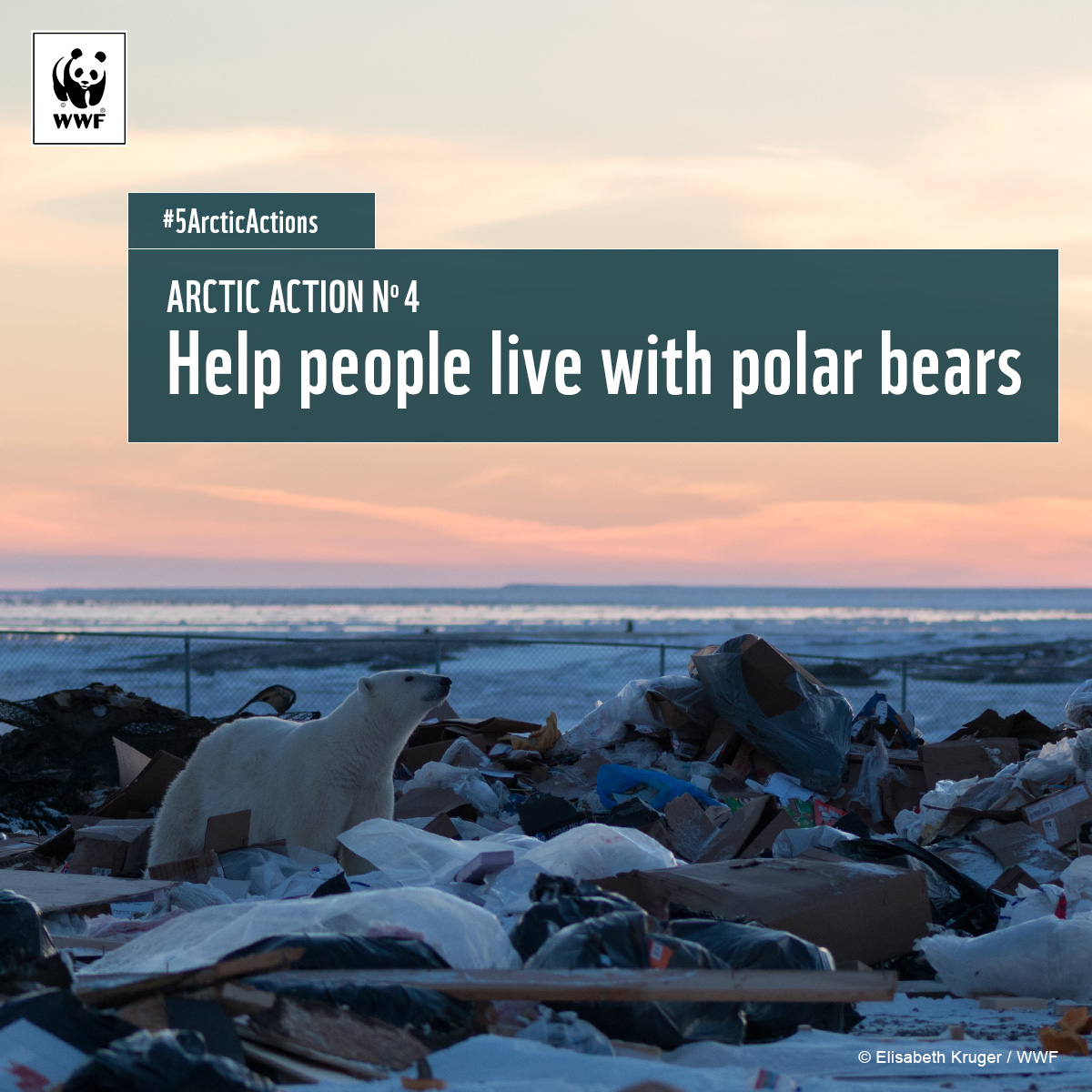


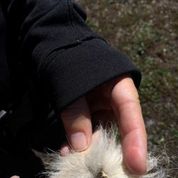
 uards keeping lookout, we picked our way to the top of a deceptively steep mountain. Happily, neither black bears nor polar bears seem interested in tangling with our group of 130 people.From our vantage point on top of the mountain, we could see for who knows how many kilometres in every direction – but no bears in sight.
uards keeping lookout, we picked our way to the top of a deceptively steep mountain. Happily, neither black bears nor polar bears seem interested in tangling with our group of 130 people.From our vantage point on top of the mountain, we could see for who knows how many kilometres in every direction – but no bears in sight.